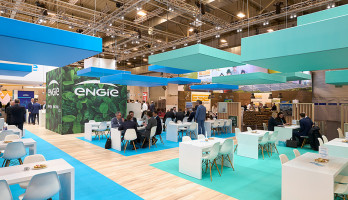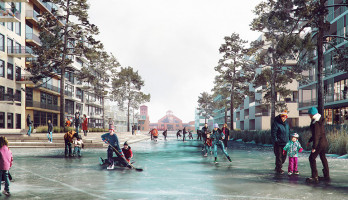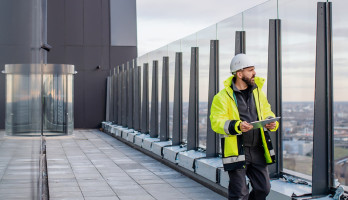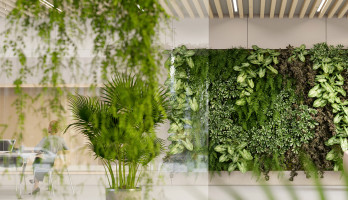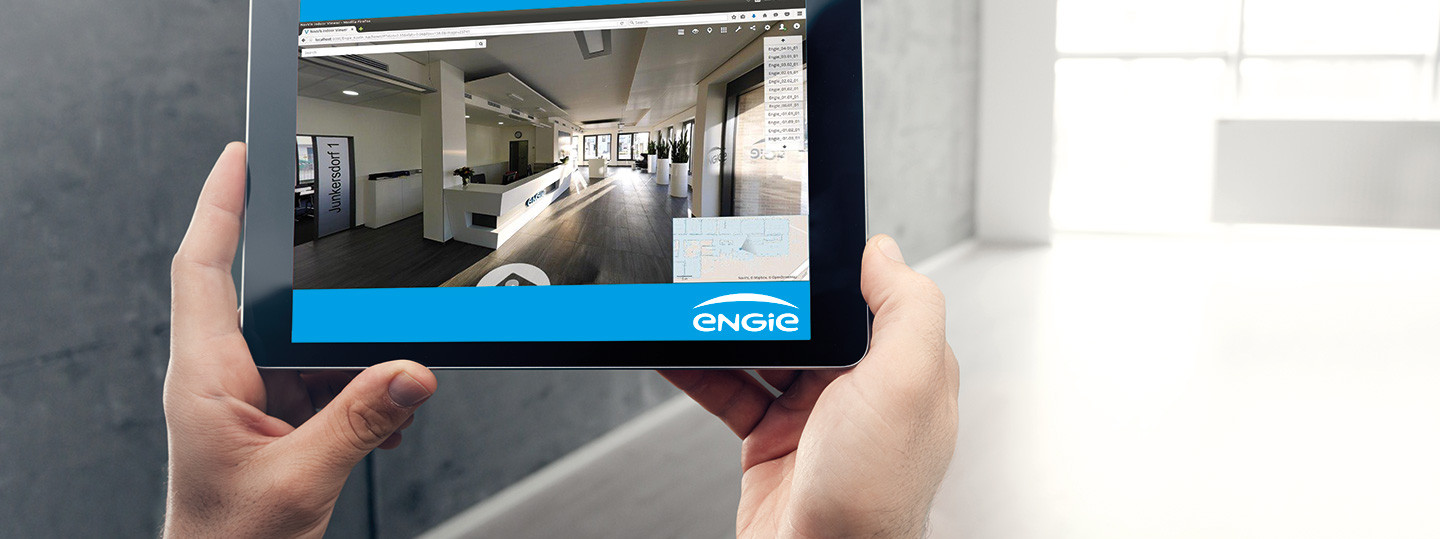
Indoor navigation: Future trend for innovative facility management
It is hard to imagine everyday life without the use of navigation systems. Whether on your way to vacation, on the road or on exploring a foreign city – smart and handy navigators help you to find the best way to your destination and provide more useful information about the surroundings. Not only on roads and open spaces, but also inside buildings, digital position determination and guidance to the desired destination in the form of indoor navigation is becoming increasingly important. In addition to virtual building tours, indoor navigation offers excellent applications for numerous other applications, such as warehouse management or facility management.
Practical helper in the building
Indoor navigation with its digital building maps is particularly well suited as an orientation aid in complex areas, for example in:
- Railway stations and airports
- Shopping centers and exhibition halls
- Hotels and museums
- Office buildings and industrial facilities
The technology also provides useful services when mapping warehouses or can help consumers find products in supermarkets faster. In the construction sector and in the crafts sector, digital images of buildings allow precise point-to-point measurements and provide a concrete insight into the local structural characteristics in advance.
NavVis: the digital building twin
The Munich-based start-up NavVis is regarded as one of the leading technology companies in the areas of digital building acquisition and indoor navigation. For the digitalization and visualization of interiors, the company with which ENGIE Deutschland is linked via a strategic partnership has developed a pioneering platform. The platform is intended to enable photo-realistic and centimeter-accurate mapping and three-dimensional representation of buildings.
The NavVis M6 uses a 3D trolley that scans the rooms using optical and electronic sensors and simultaneously takes high-resolution 720-degree photographs of the entire interior. The collected data and information are then processed via a software solution and made available in a browser-based IndoorViewer.
Virtual spatial landscapes for future-oriented facility management solutions
"For us, NavVis is a tool that we want to integrate into our FM processes in order to record a building condition as quickly and completely as possible," explains Stefan Schwan, Head of Facility Services at ENGIE Deutschland. Particularly when it comes to compiling building information, which previously had to be recorded and checked manually, the technology provides considerable advantages. "This type of visual documentation significantly increases the accuracy of the data base for our facility services planning," says Schwan. For example, unnecessary maintenance appointments or unplanned rework due to incomplete information can be more easily avoided.
Indoor mapping and indoor navigation enable new services
The visualization of interiors and the indoor navigation also create space for completely new services. "Mapping as a Service" to keep the spatial data always up to date, allows, for example, the fast updating of escape and rescue routes. Another application: Indoor navigation not only provides a quick orientation aid to external and local service providers such as craftsmen or cleaning personnel. "These virtual tours can be enriched with additional information, such as videos or texts, so that in the ideal case the entire documentation of a room can be called up in the virtual model," says Schwan.
Another potential for building management lies in the introduction of ticket systems based on the images taken. For example, employees in the virtual model can select and report faulty lights, power outlets or radiators in their office rooms with just a few clicks. Another benefit for service employees: In advance, you have at your disposal an accurate picture of the spatial conditions, for example which lighting is installed, whether a ladder is required or which tool is needed.
Pay-as-you-go during the construction phase
Even before a building is commissioned, i.e. already during the construction phase, the NavVis technology provides valuable support. Similar to Intelligent Drones , precise information on the progress of work on the construction site can be gathered and made available to all project participants without complication. The systematic, precise and efficient recording of building data is particularly suitable for comparison with digital building plans. Thus, the visualization of the interiors creates a realistic image of the current ACTUAL state and makes an essential contribution for maximum planning accuracy during construction.
Conclusion: Indoor navigation opens up exciting possibilities in facility management
Indoor mapping and indoor navigation offer numerous links for innovative solutions and efficiency gains throughout the entire life cycle of a building. This technology has enormous potential, particularly with regard to the facility management solutions of the future. There are already various interesting approaches for an efficient integration of the technology into the building management. The possibilities for use go far beyond virtual tours in buildings. A particular added value in terms of future-oriented facility management results above all from the combination with other technologies, for example with the Internet of Things or smart building automation.
Our Expert


